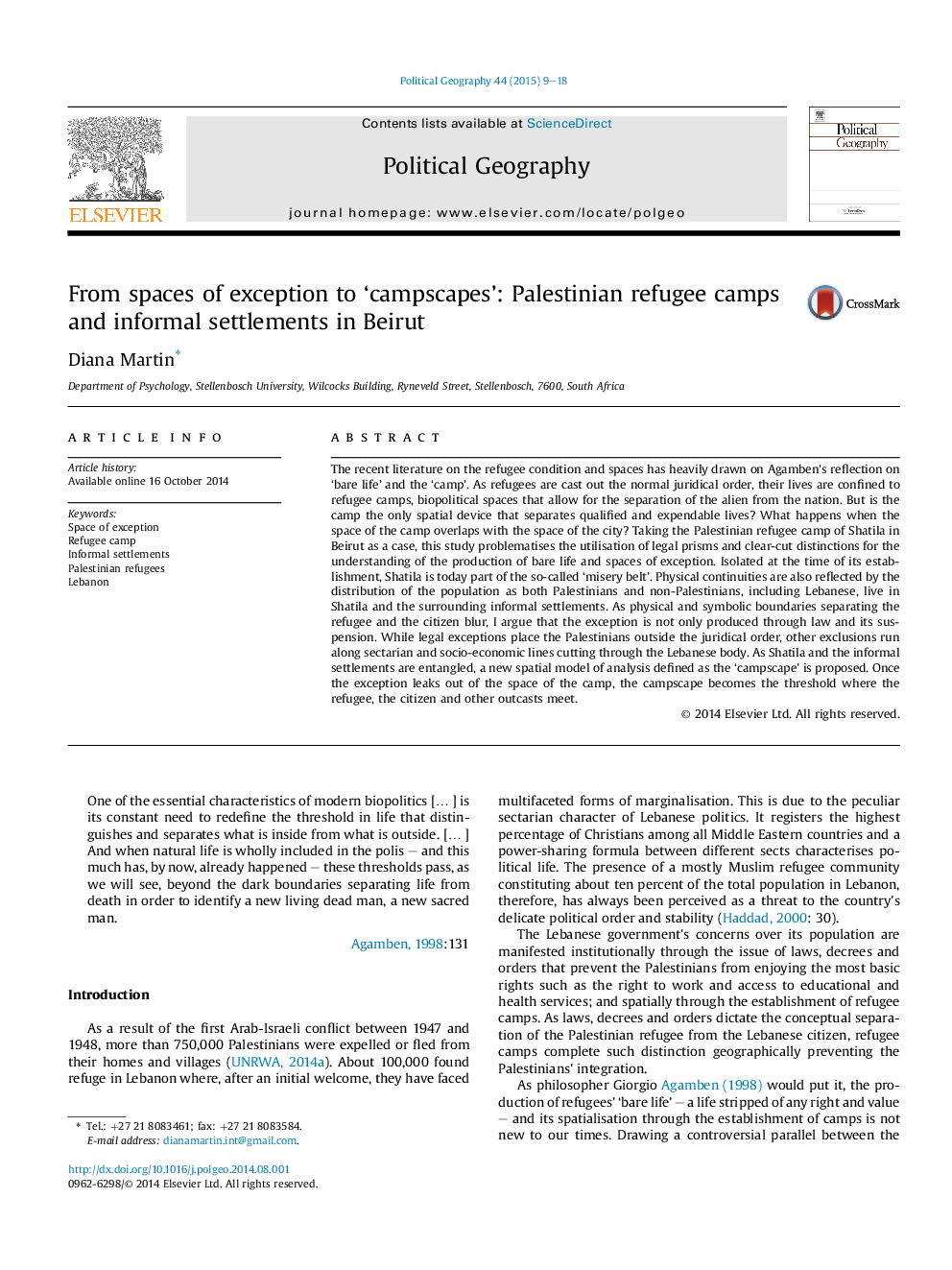| کد مقاله | کد نشریه | سال انتشار | مقاله انگلیسی | نسخه تمام متن |
|---|---|---|---|---|
| 1061907 | 1485588 | 2015 | 10 صفحه PDF | دانلود رایگان |
• I argue that the exception is not only produced through law and its suspension.
• Clear-cut distinctions between the refugee and the citizen do not exists.
• Bare life is not confined to the spaces of the camp but exceeds its boundaries.
• As refugee camps and informal settlements meet, the campscape is produced.
The recent literature on the refugee condition and spaces has heavily drawn on Agamben's reflection on ‘bare life’ and the ‘camp’. As refugees are cast out the normal juridical order, their lives are confined to refugee camps, biopolitical spaces that allow for the separation of the alien from the nation. But is the camp the only spatial device that separates qualified and expendable lives? What happens when the space of the camp overlaps with the space of the city? Taking the Palestinian refugee camp of Shatila in Beirut as a case, this study problematises the utilisation of legal prisms and clear-cut distinctions for the understanding of the production of bare life and spaces of exception. Isolated at the time of its establishment, Shatila is today part of the so-called ‘misery belt’. Physical continuities are also reflected by the distribution of the population as both Palestinians and non-Palestinians, including Lebanese, live in Shatila and the surrounding informal settlements. As physical and symbolic boundaries separating the refugee and the citizen blur, I argue that the exception is not only produced through law and its suspension. While legal exceptions place the Palestinians outside the juridical order, other exclusions run along sectarian and socio-economic lines cutting through the Lebanese body. As Shatila and the informal settlements are entangled, a new spatial model of analysis defined as the ‘campscape’ is proposed. Once the exception leaks out of the space of the camp, the campscape becomes the threshold where the refugee, the citizen and other outcasts meet.
Journal: Political Geography - Volume 44, January 2015, Pages 9–18
